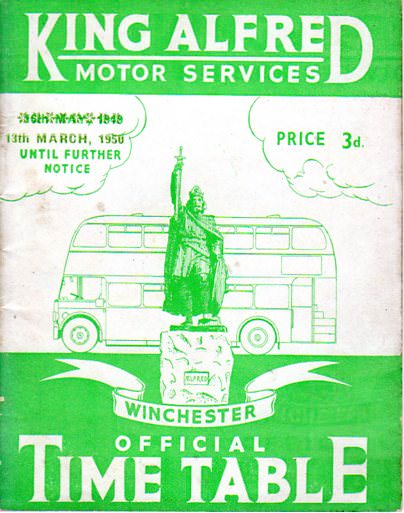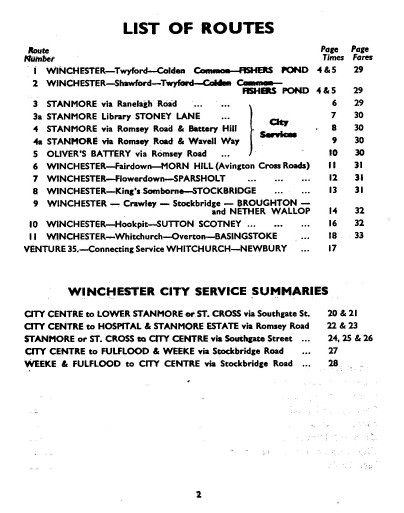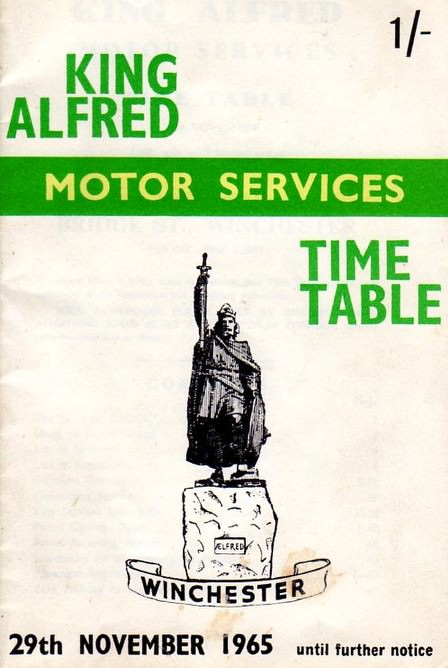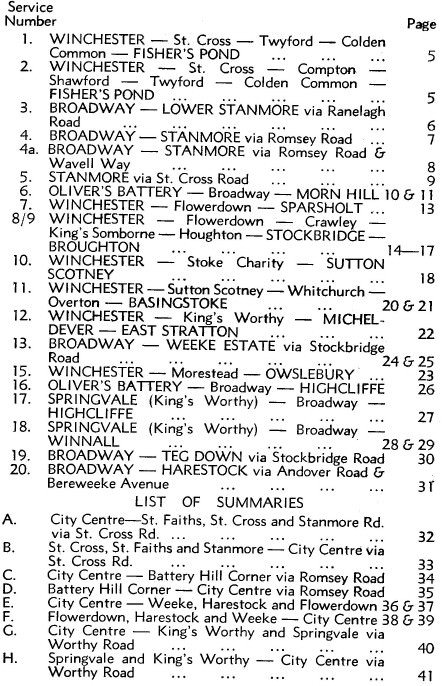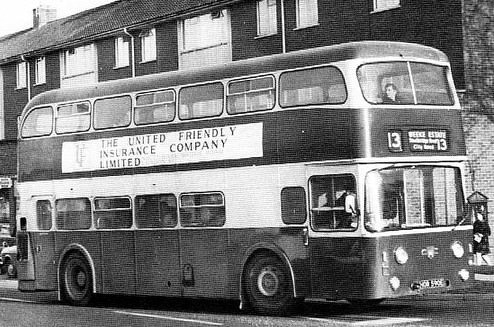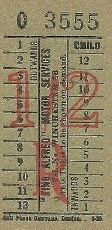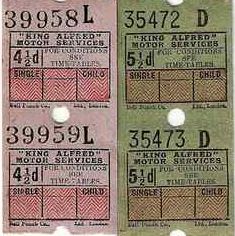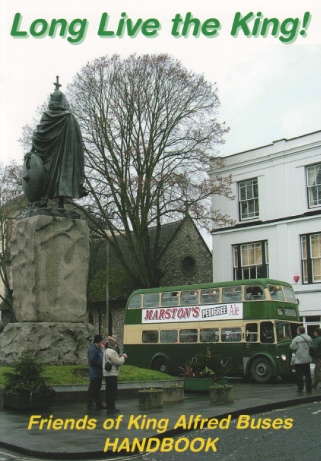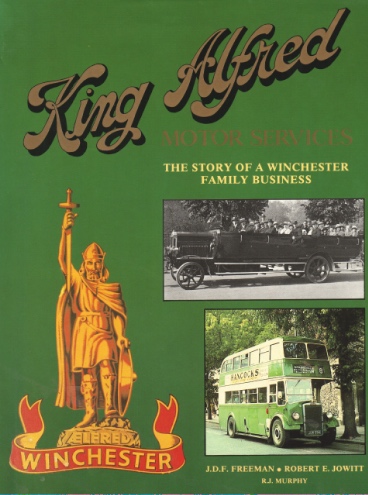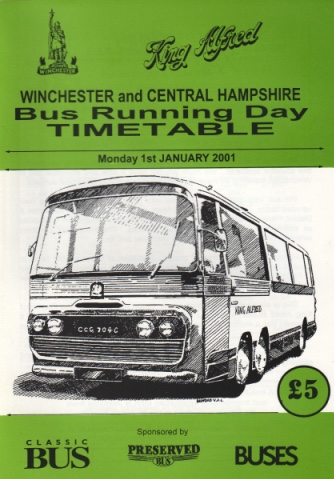|
||||||||||||||||||||||
|
||||||||||||||||||||||
| Please note this is a site of historical record and does not contain current service information | ||||||||||||||||||||||
|
The
story of this
Winchester operator has been recorded more fully elsewhere so the main
focus of this present article is to look briefly at the bus routes that
they
operated over the post-war years. It was unusual in being one of
the
few privately owned companies of size that provided a municipal type of
service
for its host city with a fleet of thirty to forty vehicles; perhaps all
the more notable that it continued to do
so until its demise fifty plus years later in 1973. An operation
ever identified by the portrayal on the sides of their vehicles of the
statue of King Alfred to be found in Winchester Broadway, the hub of
their bus routes over the years.
To set the historical context the firm was founded by Robert Chisnell
senior in 1915 during the first world war with shooting-brakes linking
the city to military establishments and army camps in the surrounding
area. Bus services per se started in 1922 with four services,
comprising two circular routes to new housing developments at Stanmore,
to the south of the city; a route to Shawford and Twyford, also south
of the city; and a route to Flowerdown to the north-west. Other
routes followed and the map below from their 1936 timetable
book
shows the geographical extent of the eleven (four country and seven
city) services at that
time. At 24 miles in length the route to Basingstoke via Whitchurch was
the longest. There was also present in the city the established
combine company Hants
& Dorset with routes to Romsey, Salisbury, Andover, Eastleigh,
Southampton, Fareham and Petersfield. Wilts & Dorset jointly
operated the routes from Andover and Salisbury. Aldershot &
District had their route 14 coming in from the east from Alresford and
Aldershot. Amongst independent
operators coming into the city were Winchester
& District (Whapshare) from Alresford and Empress Coaches
(Martin-Cooper)
who ran on the road west to Stockbridge in competition with King
Alfred, resulting in several battles in the traffic courts.
Competition from Empress, which had commenced in 1928, would remain
along the Stockbridge road until 1961.
|
||||||||||||||||||||||
1936 route map of King Alfred services |
||||||||||||||||||||||
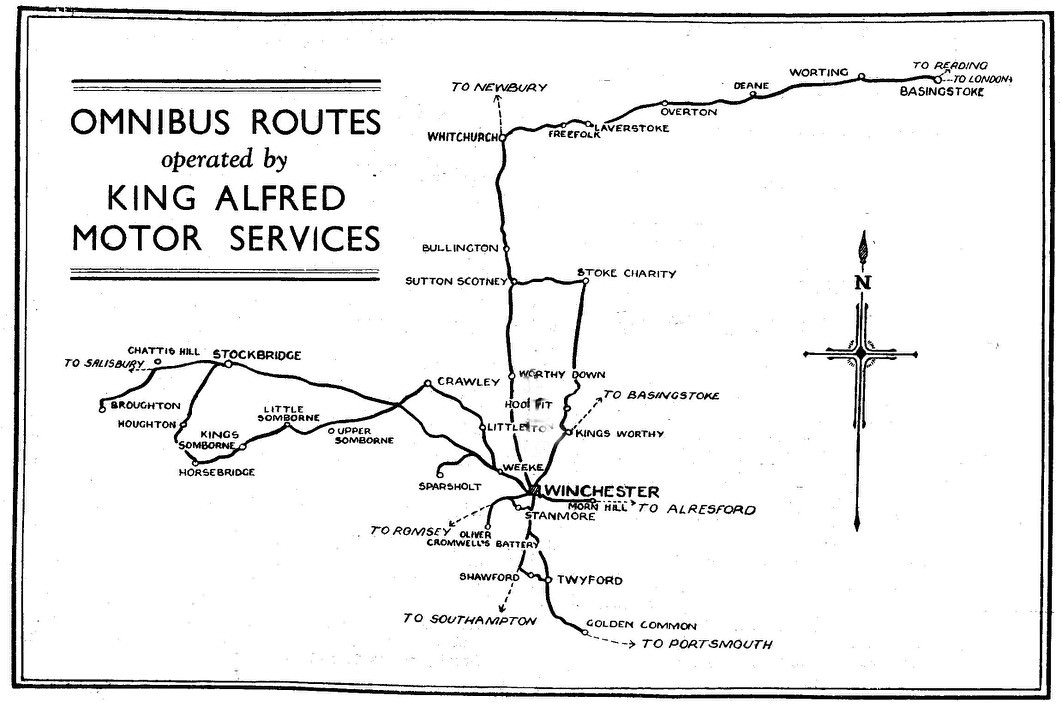
|
||||||||||||||||||||||
| A limited company was formed
in 1939. The second world war was a time
of austerity and difficulty for transport operators, with staff and
fuel shortages, but again there were heavy loadings to be carried given
the range of military camps and bases. The 1940 timetable showed
a network of eleven
services in operation. It differed little from the 1950 list below
except for the omission of the 3A and the 4A. The
first conductresses joined the staff and it was during the war that
the company's first ever double-deck buses arrived, a Leyland Titan and
four Guy Arabs. All five were wartime utility models. The
founder Robert Chisnell died in June 1945 but his two sons continued
the business, known to all as Mr Bob and Mr Fred. In post-war
years services and carryings continued to develop, the continuation of
petrol rationing as a deterrent to private motoring being a great
promoter of public transport. From 1946 Venture 11 (coincidence
or not?) came south from Basingstoke, albeit by a
different route along the A33 to that of King Alfred. The illustration
below gives the
list of routes as shown in the May 1949 timetable; the same booklet was
reissued in March 1950 as shown, but with no great change to its
contents except for introduction of connections on route 11 at
Whitchurch to the Venture 35 service to Newbury. Route numbers
which had previously only appeared in timetables now were shown on the
buses for the first time. The daytime running requirement was
some 15 buses. |
||||||||||||||||||||||
1950 timetable and list of routes (original page size 5.5 x 4.25 inches) |
||||||||||||||||||||||
Further services were added to the route network, the 12 to East
Stratton in April 1953, previously operated by Callaway of Micheldever;
followed by the 13 to Weeke Estate in September of that year to serve
new housing developments. The number 14 was not used as it
was already employed by Aldershot & District on their route coming
in to Winchester from Alton. In November 1953 the fleet size stood at 45 of
which 18 were double-deck (all Leyland Titans except for 3 utility Guy
Arabs), 13 single deck buses and 14 coaches. The 15 to Owslebury
followed in November 1955,
with the 16 to Highcliffe in January 1956, both replacing the
previous Greyfriars
services which had been withdrawn. King Alfred assumed these
services somewhat reluctantly as it was already experiencing staff
shortages. 1960 saw new service 18 to Winnall, extended the next
year to Spingvale (replacing short workings on route 10 to Sutton
Scotney), alternating with the 17 to there from Highcliffe.
November 1965 saw the final route extensions with 19 to Teg Down and 20
to Harestock, both of which were to serve new housing areas to the
north west of the
city. The illustration below gives details of the routes at
this time, requiring some 22 daytime buses in service.
|
||||||||||||||||||||||
1965 timetable and list of routes (original page size 8.5 x 5.5 inches) |
||||||||||||||||||||||
|
||||||||||||||||||||||
|
||||||||||||||||||||||
| A short black-and-white film of
King Alfred (and Silver Star) operations in the 1950s can be found on
Youtube here |
||||||||||||||||||||||
|
||||||||||||||||||||||
